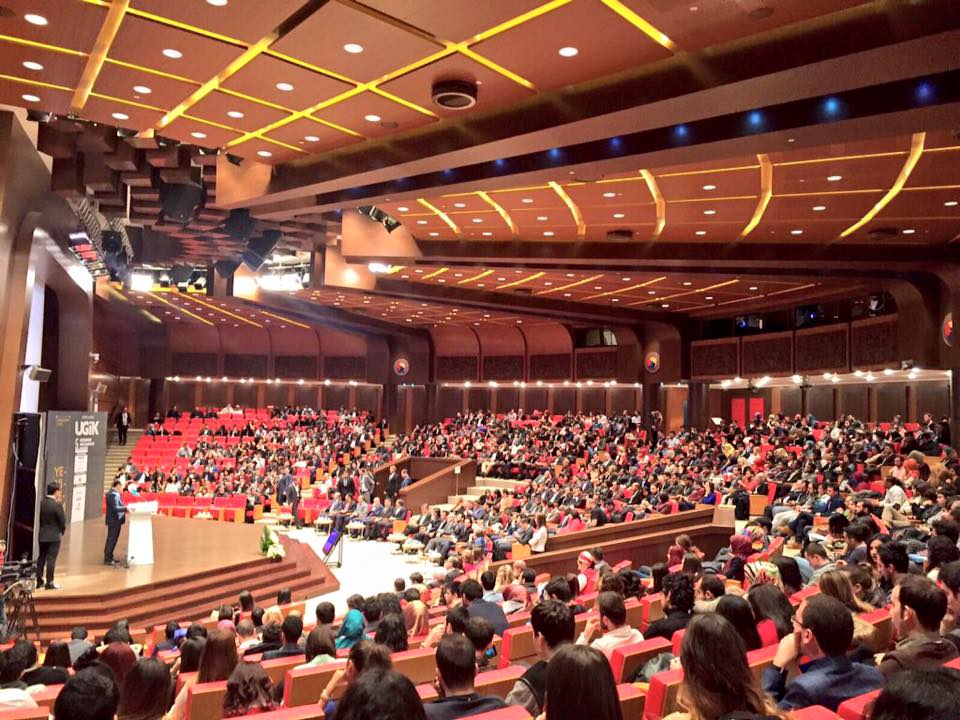

Year 2015 has been a busy, challenging and a successful Year. FSTC wishes all our colleagues, supporters and readers a successful and prosperous Year 2016. This report provides information on the projects we have worked…


The two day workshop, 24th and 25th June 2014


The 7th to the 13th century was the golden age of Muslim learning. In mathematics they contributed and invented the present arithmetical decimal system and the fundamental operations connected with it addition, subtraction, multiplication, division,…


The Trustees of FSTC: Prof. Salim Al-Hassani, Prof. M. El-Gomati, Peter Fell, Ian Fenn, Mohammed Hafiz, Zeki Poyraz It is with great sadness that we announce the passing away of our dear friend and colleague…


On Friday 1st October 2010, thirty Turkish academics and public figures met to launch the Muslim Heritage Awareness Network Turkey (MHANT) at Marmara University in Istanbul.


Professor Salim Al-Hassani, Chairman of FSTC, has visited the University of Aleppo on 11 October 2010 to greet the new President of the university, Dr Nidal Shehadeh, and to renew the long standing friendly relationship…


On June 21, 2011, Professor Ekmeleddin Ihsanoglu, the Secretary General of the Organization of the Islamic Conference (OIC), lectured about the importance of science and technology for Muslim nations at the American University in Sharjah…


This academic meeting will be held on the occasion of celebrating the International Launch of the new blockbuster 1001 Inventions Exhibition


Bettany Hughes is an advisor to the Foundation for Science, Technology and Civilisation (FSTC) and member of its consultant network Muslim Heritage Awareness Group (MHAG). Her Youtube films on East/West understanding produced by FSTC were…


Amicable number, perfect numbers, deficient numbers, abundant numbers, studying numbers was done by many including Ibn Sina better known for work in medicine.


FSTC was invited to speak at the UK House of Lords for the Every Muslim Child Matters project


FSTC and Muslim Heritage Consulting (MHC) took part in the high profile opening of the Qatar Science and Technology Park on March 16th 2009. The opening night celebrations were attended by His Highness Sheikh Hamad…


Professor Rafid Al-Khaddar, Head of Construction and Civil Engineering Department at John Moores University, Liverpool, and Key Associate and Fellow of FSTC, presented a lecture on "Science and Research in the Arab World".
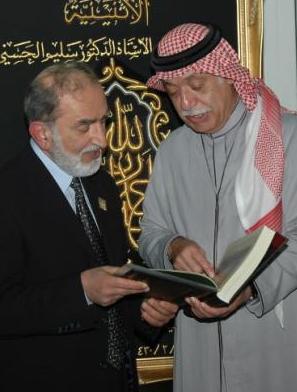

On 2 February 2009 Professor Salim Al-Hassani, Chairman of the FSTC was given homage by Sheikh Abdul Maqsood Khoja at the Al-Ithnainiya Literary Forum in Jeddah, Saudi Arabia.


London Conference tackles 1000 years of amnesia of Muslim science and technology, Wednesday 15th October, 2.30pm, Hoare Memorial Hall, Church House, Westminster.


In the following bibliography of the Islamic and Chinese scientific relationships in classical times, a list of the main recent works is produced. The researches cover various scientific domains, from mathematics and astronomy to technology,…


Dr. Farouk El-Baz receives 1001inventions book


In the frame of the forthcoming of The World Conference on Intellectual Capital for Communities, Professor Salim Al-Hassani, FSTC Chairman of the Board, presents a keynote lecture on the theme: Innovation in the Islamic World:…


Cultural Understanding is "Recognising that modern science has its roots in many different societies and cultures, and draws on a variety of valid approaches to scientific practice."ASE has been working with the Foundation for Science…


One of the earliest detailed descriptions of Northern Europe is reported in the account written by the Arab Muslim writer and traveler Ahmad Ibn Fadhlan, who was sent in 921 CE as the secretary to…
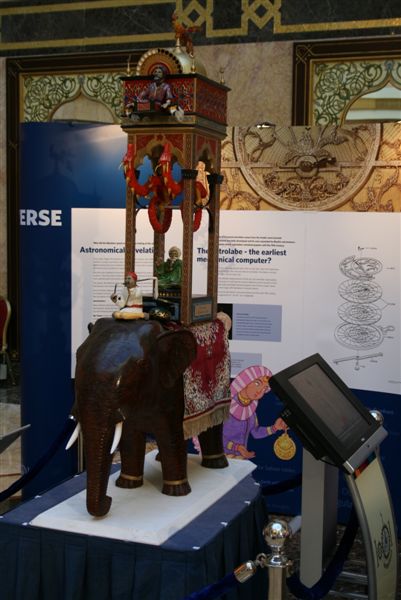

Prof. Salim Al Hassani, a Muslim Scholar and the chief editor of "1001 Inventions: Muslim Heritage in Our World" , will deliver his presentation on "The Muslims' Great Contributions during the Golden Age of the…


800th anniversary and receiving a copy of the 1001i book for the Athenaeum library. The Liverpool Athenaeum has a distinguished membership of proprietors drawn from every walk of life across the city of Liverpool and…


A total eclipse of the Moon occurs during the night of Wednesday, February 20/21, 2008. The entire event is visible from large parts of our globe. On this occasion, we attract the attention of our…
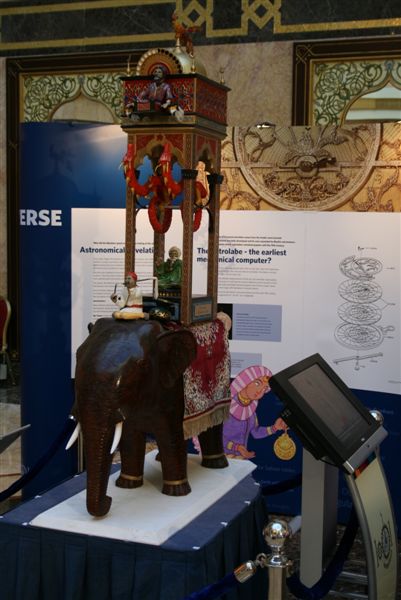

During "The First Regional Conference on the Knowledge Economy" in Jeddah, Saudi Arabia, January 12-13, 2008, attended by over 300 experts and professionals as well as several VIPs, Professor Salim Al-Hassani delivered a key note…


Some 800 years in the past, in 1206, a brilliant Muslim scholar died : Badi' al-Zaman Abu al-‘Izz ibn Ismail ibn al-Razzaz al-Jazari. He was one of the most important inventors and mechanical engineers in…


Some 800 years in the past, in 1206, a brilliant Muslim scholar died : Badi' al-Zaman Abu al-‘Izz ibn Ismail ibn al-Razzaz al-Jazari. He was one of the most important inventors and mechanical engineers in…


The Arabian Knowledge Economy Association organises "The First Regional Conference on the Knowledge Economy" that will be organized jointly with Al-Aghar Strategic Think Tank Group and Jeddah Chamber of Commerce & Industry in Jeddah, Saudi…


1001 years ago, an extraordinary astronomical event occurred in the sky: the most intense supernova ever witnessed and recorded by human beings appeared in the Earth's sky in the year 1006 CE. The blast was…


This is a review of a book bringing to light a collection of about 1300 Islamic scientific manuscripts on astronomy and various scientific topics in three languages (Turkish, Arabic and Persian). These manuscripts are held…


This is a general review of some 23 recent publications (books, films, and articles) on various aspects of Islamic culture, history and civilisation. The survey concentrates on titles related to three categories: art and architecture,…


To throw light on famous figures of the Turkish modern medical school, this article introduces a set of nine posters on the contribution of eight late Ottoman and early Turkish physicians (whose careers spanned from…


24 craters of the Moon bear names of Arabic and Islamic origin. In majority, these names are those of famous scholars of Islamic civilisation. We present below a list of those crater-names on the Moon,…


On the occasion of the lunar eclipse that occurs on 28 August 2007, we produce a short survey of some records of lunar and solar eclipses reported on in Muslim heritage, drawn from various sources,…


This article includes the Latinized names of Muslim scholars.
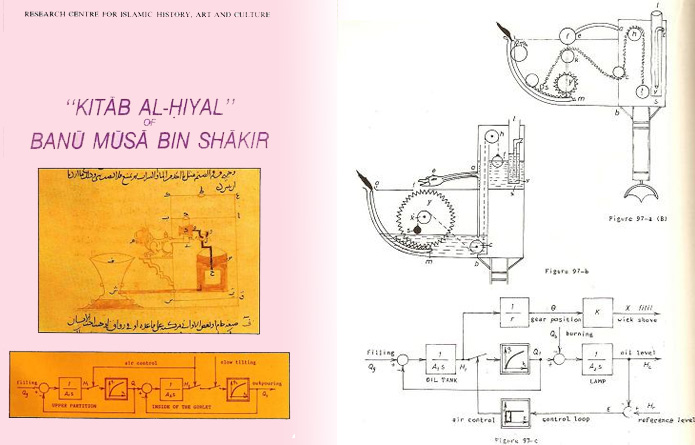

This article is a review of the book published recently by Professor Attila Bir (Istanbul Technical University, Faculty of Electrical and Electronics Engineering, Istanbul) on Banu Musa's book of mechanics studied in the framework of…


Al-Zarqali is an eminent Andalusian astronomer of the 11th century who was the foremost astronomer of his time. He excelled in different domains of theoretical and practical astronomy and left works that influenced greatly his…


1001 Inventions: Discover the Muslim Heritage in Our World launched at Thinktank, Birmingham's Museum of Science, at Millennium Point on 24th May as part of a UK-wide tour. This unique travelling exhibition revealing 1,000 years…


The Citadel of Aleppo is one of the oldest monuments in the world. It is the most famous historic architectural site in Syria and is built on top of a huge, partially artificial mound rising…


Evening lecture with Professor Salim Al-Hassani. Tuesday 21 November 2006, 6pm-8pm


Until recently, the mainstream history of scientific ideas has failed to acknowledge numerous Islamic scientists and their great efforts and achievements throughout the centuries. This short article seeks to contribute in redressing this injustice by…


Ibn Jubair is widely recognised as one of the greatest travellers and geographers of Muslim history. From excerpts his work, The Travels of Ibn Jubair, as presented in this short article we are able to…


The ethics or philosophy of science has in more recent times become an increasingly important subject. This article discusses and compares modern day scientific ethics with the ethics or morality underpinning Islamic Science.


This article describes some of the numerous Muslim contributions to the development of Spanish agriculture, including the introduction of new crops, more intensive use of irrigation, soil management, and scholarly efforts in farming innovation. Such…


Ibn Battuta is regarded by many to be one of the greatest travellers and explorers the world has ever seen. In fact, he was able to travel over 75,000 miles, in twenty years and through…


By way of faith, Muslims have a strong regard for the care of animals. This is due to the attention that the Prophet Muhammad encouraged the wellbeing and good-treatment of other creatures of God. Muslims…


Captain Buzurg ibn Shahriyar, a shipmaster from Khuzistan compiled a collection of stories and accounts of his experiences as a sea farer between 900 and 953. As well as stretching one's imagination, Captain Bazurg's ‘The…


The introduction of Arabic numbers into Europe involved more than a way of writing numbers down. It also involved new ways of calculating with pen and paper that were faster and easier and the system…


Iran has made great contributions to Muslim architecture culminating in the introduction of the cylindrical minaret form and the four-iwan plan. The most momentous work that survives in Iran is the Masjid-i-Jami at Isfahan.


Al Hakim Mosque is the second major Fatimid Mosque and the fourth most important religious edifice in Egypt. The articles provides an elaborate account of the Fatimids contribution to its rich architectural design.


Tycho Brahe "was a brilliant astronomer and scientist of his time, and has had a big significance on the development of astronomy, science in general, and our view of the world" has been influenced by…


Msatta is a renowned Ummayad palace with spectacular architectural and artistic details that continues to attract many. The decorative aspects of the Palace are of immense detail and splendour and thus has become an important…


Karatay Madrasa can be considered as the apex of Seljuk architectural small space design. Major features of the madarasa are the great dome and the inclusion of elaborate decoration schemes, essentially from mosaics of glazed…
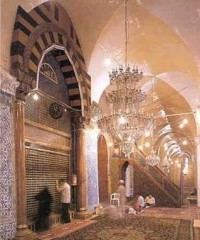

Built by the Umayyad Caliph Suleyman in 717 CE and altered several times, the Great Mosque of Aleppo remains one of the architectural masterpieces of the Muslim world.


Basra became like many places in the Muslim world a centre for knowledge and commerce. Originally set up on the orders of the Caliph as a military camp, the town had good fortunes but suffered…


Of the many splendours of Egypt, the Al-Azhar stands as a landmark in its architectural and cultural history, marking the beginning of the Fatimid rule and the foundation of its capital Cairo (Al-Qahira, "The Victorious").


The Great Mosque of Tlemcen as a whole is an architectural masterpiece however, the techniques introduced in the construction of the mihrab dome are the most innovative. It is one of the oldest and best…


"The whole together appears like a most perfect pearl on an azure ground. The effect is such as, I confess, I never experienced from any work of art. The fine materials, the beautiful forms, and…


Abul Mumin chose to build his mosque adjacent to the main street of booksellers to emphasize the importance of reading and learning as the main source of progress, hence the origin of the name "Kutubiya".
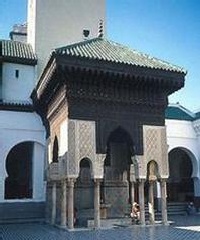

For well over twelve hundred years Al-Qarawiyyin has been one of the leading spiritual and educational centres of the Muslim World, a typical institution, of many, underlining how learning constituted the heart of the religion…


Bejaia - a small town on the north coast of Algeria, was once a trading hub of the Mediteranian trading extensively with many places including Pisa. Through this town, a great deal of Mathematics was…


Khirbat Palace remains a unique example of Umayyad luxury and their developed taste for art. The palace gained particular reputation due to the well-preserved floor mosaics.
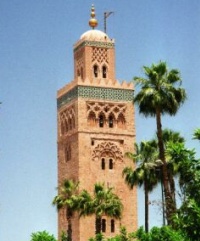

Marrakech became, due to the ambitions and sponsorship of its rulers, the centre of attraction for numerous scholars including Ibn Rushd who served as the Chief Physician and where he pursued many works in science.…


Cordoba used to be the jewel of Europe dazzling visitors from the North. With over 70 public libraries during the time of Caliph Hakam II, and 900 public baths, Scholars and booksellers flocked there and…


The Great Umayyad Mosque remains one of the great symbols of the glorious period of Muslim civilisation and its pride. It is a master piece of architectural ingenuity having a decisive influence on the maturity…


In the Ribat (defensive engineering structures) of Port Soussa one finds evidence showing the early use of ribbed vaulting by Muslims. Such a technique was not used in Europe until the 11th century, some 200…


Ibn Tulun Mosque is a rare example where Europeans openly admitted its influence on the development of many features of their architecture. Elements such as the pointed arch, the pier, and wall battlements formed the…


In year 642AD, A'mr Ibn Al-Aas laid the foundations of the first and oldest Mosque in Egypt and Africa. Measuring 25 meters long by 15 meters wide it was a simple structure and imitated the…


Kitab Al-Ma'a, a strange title for the first known Encyclopedia of Medicine arranged according to the alphabet was recently discovered in Algeria and published in Oman. Contains over 900 pages and was written by Ibn…


Paper, originally, was brought by the Muslims from China. From an art, the Muslims developed it into a major industry. Paper mills flourished across the Muslim World. The impact of Muslim manufacture of paper paved…
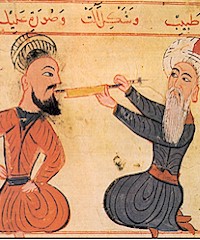

Possibly the earliest hospital in Islam was a mobile dispensary following the Muslim armies, dating from the time of Prophet Mohammed (PBUH). By the 12th century, the hospital had become a very advanced institution.


ln 1154 Nur-al-Din Zangi built a hospital in Damascus. It was called al-Nuri, or al-Zangi.


A white marble tomb built in 1631-48 in Agra, seat of the Mugal Empire by Shah Jehan for his wife, Arjuman Banu Begum, the monument sums up many of the formal themes that have played…


Built by Al-Mansur who rules Morocco and Spain until his death(1184-1199AD). At its time, the hospital had no equal in the world.


The observatory of Samarqand dates from 1424AD and was a `monumental' building equipped with a huge meridian, made of masonry, a ‘Fakhri sextant’, of a radius of 40.4 metres. It was built By Uluh Beg…


The notion, repeated in the Quran, of Paradise as a garden (al-janna, "The Garden") is symbolized in the form of Andalusi gardens, a few of which survive physically and some of which are described in…


Ibn-khaldun enters the frame of Islamic scholarship, associating both intellectual might and near perfect organisational skills to set the foundations for our modern social, economic, historical and political sciences.


The first Muslim adaptation and modification of the design of the arch occurred in the invention of the horseshoe type. Further development came in the 8th century when Muslims used, for the first time, the…


Terminological issues are connected with the use of "Muslim" and "Islamic" architecture. The two words are theoretically interconnected but conceptually different. Muslim is a general word referring to religious and geographical setting of Islam.


Although Muslim architecture has been investigated by both Muslims and non Muslims, it still remains omitted from main stream architecture theories and much of existing works are no more than curiosities undertaken by a group…


The Qayrawan Mosque contributed a great deal to the development of architecture in the Muslim world. With its original design and harmony of various components it was a prototype model for the rest of North…
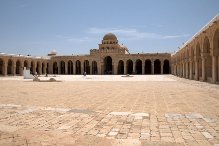

The arrival of Islam to North Africa at the hands of Uqba Ibn Nafi (d.683) transformed region into a construction field resulting in the elaboration and dissemination (to Europe) of building techniques and architectural forms.


First in a series of articles on the Architecture of Muslim Spain and North Africa (756-1500AD). A brief historical background on the Muslim architectural achievement concentrating on important historical and architectural monuments.


In 1513 Piri Reis presented his famous map of the New World to the Sultan, giving the Ottomans, well before many European rulers, an accurate description of the American discoveries as well as details about…


Water management in all its intricacies, from Andalusia to Afghanistan, was the basis of agriculture, and source of all life. Muslims did much to develop hydraulic technology and deploy water management equipment including hydro-power dams.


Kevin Krisciunas writes on The Legacy of Ulugh Beg. Although he recognising the crucial role of Islamic observation, he still finds sources of disagreement with the notion that the Samarqand observatory exerted decisive influence on…


Al-Battani used the widest variety of instruments: astrolabes, tubes, a gnomon divided into twelve parts, a celestial globe with five armillaries, parallax rules, a mural quadrant, sundials, vertical as well as horizontal.


Most eminent Muslim astronomers include Al-Battani, al-Sufi, al-Biruni, and Ibn Yunus. They recorded the position of the sun, moon and the stars.


Muslim farming manuals developed ways and methods for increasing production and productivity, and maintaining soil fertility. Extensive research detailed descriptions of soils, and their requirements.


Advances in Muslim chemistry led to the development of Muslim pharmacology. Al-Zahrawi made pioneering developments in the preparation of medicines by using sublimation and distillation. Others excelled in chemical technology.
Muslim Heritage:
Send us your e-mail address to be informed about our work.
This Website MuslimHeritage.com is owned by FSTC Ltd and managed by the Foundation for Science, Technology and Civilisation, UK (FSTCUK), a British charity number 1158509.
© Copyright FSTC Ltd 2002-2020. All Rights Reserved.
